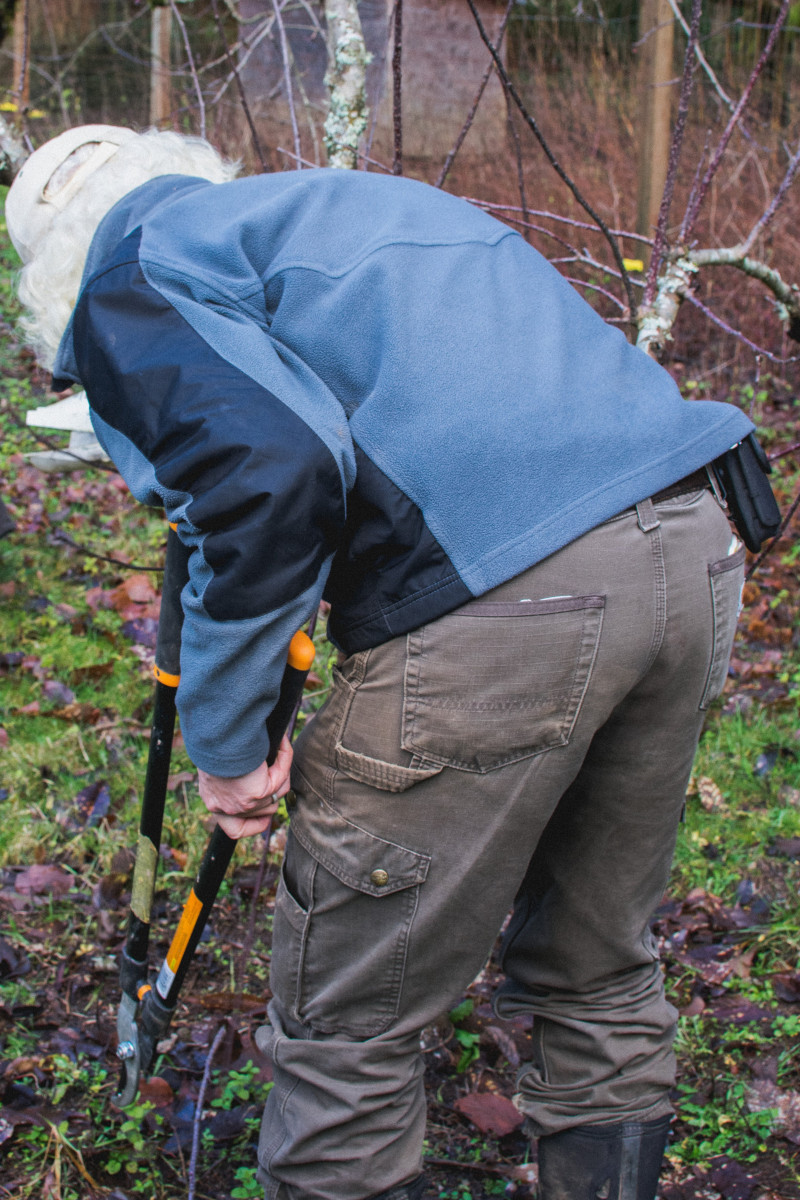Apple trees, like most plants, don’t necessarily grow in the way that we want them to. Our apple trees sit on dwarfed root stock, keeping them short, ideally shaped like an upturned bowl. This allows for proper air and light flow, as well as easy harvest.
When pruning in the winter, you can typically remove up to 30% of the biomass. It is best to do heavily pruning during the colder seasons, while the plant is dormant.

There are many indicators of what may need to be removed, and in some cases it may take many seasons to reshape an improperly pruned tree. Basically, you’ll have a few objectives when pruning:
- Shaping the tree for easy harvest
- Removing suckers, which are shoots from the root stock. These are not the same as the tree that is grafted on, and are undesirable.
- Removing water shoots, which are new shoots that reach directly up. These won’t produce fruit in the next season, and are structurally problematic.
- Limiting inter-crossing and growth towards the inside of the tree. Branches that touch eachother can cause chafing, opening up the tree’s flesh for disease and insect pests. Additionally, it reduces airflow and light flow throughout the rest of the tree, making it less efficient.
- Removing any diseased tissues, to limit its spread through the tree or orchard. These limbs should be removed from the orchard after pruning as well.
- Preserve fruiting buds. They appear on older growth, and are stout buds, usually on small stems coming off of the branch.
- Make sure branches have secure angles. Desirable angles usually range from 40-60%, and prevent fruit breakage, and also allow better auxin distribution, leading to more evenly distributed buds on branches.
With these tips in mind, pruning should go fairly smoothly. It is fairly hard to damage the tree beyond repair, and pruning only becomes better informed as you garner more experience while doing it.
It is important to note some of the effects of pruning. Although yield will be decreased, the quality per fruit will be significantly improved. This allows you to sell a more expensive, better quality product, and makes yields more reasonable for small scale farms. Additionally, by limiting the amount of apples the tree can produce, it is more likely it will fruit annually rather than biannually.